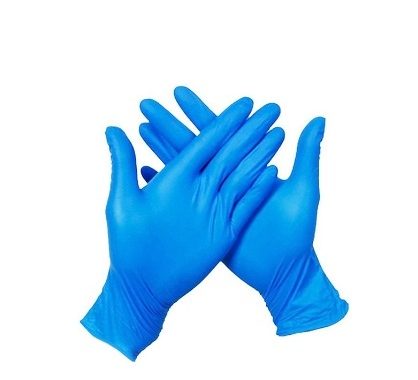In the food processing industry, whether in food factories, restaurant kitchens, or supermarket deli sections, blue nitrile gloves are a standard requirement for workers. Compared to other glove colors and materials, why does the food industry prefer blue nitrile gloves? Today, let’s uncover the real reasons!
1. Why Does the Food Processing Industry Choose “Blue” Gloves?
🔹 High Visibility to Prevent Foreign Object Contamination
During food processing, if a glove tears and fragments fall into the food, blue is the easiest color to spot, as natural food rarely contains blue elements. This helps prevent foreign object contamination. In contrast, white, transparent, or flesh-colored gloves can blend in with food, increasing safety risks.
🔹 Complies with Food Safety Standards
Many international food safety regulations, such as HACCP, ISO 22000, and FDA, recommend using high-visibility gloves, and blue has become the industry standard for food safety.
🔹 Facilitates Food Safety Supervision
Supervisors and inspectors can easily check whether employees are wearing compliant gloves, improving hygiene management efficiency and reducing the risk of violations.
2. Why Choose Nitrile Gloves for Food Processing?
In addition to color, the material of food processing gloves must meet strict safety standards. Compared to PVC and latex gloves, nitrile gloves offer significant advantages:
✅ Latex-Free to Prevent Allergies
Latex gloves contain natural latex proteins that may cause allergic reactions. Nitrile gloves are latex-free, making them suitable for all users without the risk of irritation.
✅ Oil and Chemical Resistance
Food processing involves frequent contact with oils, seasonings, vinegar, alcohol, and other substances. Nitrile gloves are more resistant to chemical corrosion than PVC or latex gloves, ensuring long-lasting protection.
✅ Powder-Free to Avoid Food Contamination
Some latex gloves contain powder, which can contaminate food. Most nitrile gloves are powder-free, ensuring no residue is left on food surfaces and meeting hygiene standards.
✅ High Elasticity for Comfort and Flexibility
Compared to PVC gloves, nitrile gloves offer superior elasticity and a snug fit, allowing workers to perform delicate tasks such as chopping, wrapping, and sorting food without restriction.
✅ High Puncture Resistance to Reduce Breakage Risks
Nitrile gloves are more resistant to tearing and puncturing than latex gloves, minimizing the risk of glove fragments contaminating food and improving overall food safety.
3. How to Choose the Right Gloves for Food Processing?
When selecting gloves for food processing, consider the following factors:
🔸 Compliance with food safety regulations (e.g., FDA, CE certification).
🔸 A bright, high-contrast color for easy detection.
🔸 Resistance to oils and chemicals for handling various food products.
🔸 A powder-free design to prevent food contamination.
🔸 Good elasticity and durability for comfort and protection.
Blue nitrile gloves meet all these requirements, making them the top choice in the food industry!
4. Applications of Blue Nitrile Gloves
✅ Food Processing Plants – Meat processing, seafood handling, fruit and vegetable sorting, frozen food production.
✅ Catering Industry – Kitchen operations, fast food preparation, food packaging.
✅ Supermarkets and Food Retail – Deli sections, bakeries, fresh food handling.
✅ Home Kitchens – Useful for handling raw meat, peeling shrimp, chopping onions, and maintaining hygiene.
5. Conclusion
The food industry prefers blue nitrile gloves for multiple reasons:
✔ Bright color enhances visibility, ensuring food safety.
✔ Latex-free, preventing allergic reactions.
✔ Resistant to oils and chemicals, ideal for food handling.
✔ Powder-free to avoid food contamination.
✔ Elastic, puncture-resistant, and comfortable for extended use.
With increasing food safety regulations, blue nitrile gloves have become the industry standard, protecting both food and workers.
